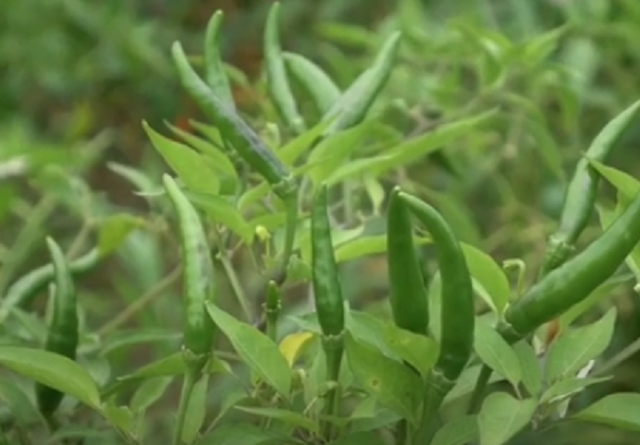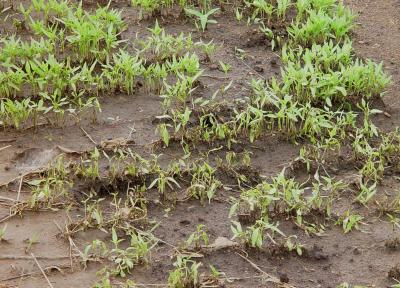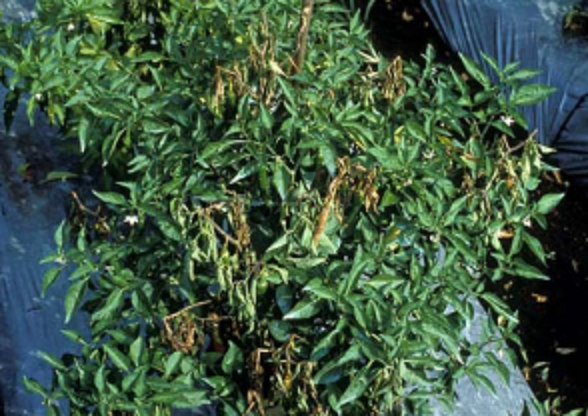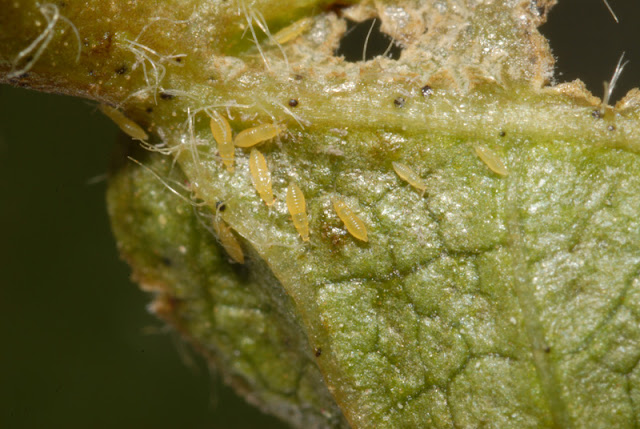Cultivation of Chilli ; Capsicum annuum L.
Cultivation of Chilli; Capsicum annuum L.
Most Popular Chillies of India ;
|
Types of chilies
|
Area of Cultivation
|
Characteristics
|
|
Bhut Jolokia
|
North East
|
it is also known as ‘ghost pepper’, Bhut Jolokia is the certified hottest chilly in the world in the Guinness Book in 2007. Bhut Jolokia is an interspecific hybrid (of Capsicum Chinese and Capsicum frutescens) It is cultivated in North-Eastern states of Arunachal Pradesh, Assam, Nagaland and Manipur. Bhut jolokia is consumed as a food and a spice, most preferable in the combination with pork or dried or fermented fish.
|
|
Kashmiri Chillies
|
Kashmir
|
It is the most sought-after red chilli in India for its colour. An ideal Indian kitchen is absolutely incomplete without Kashmiri Mirch powder as it adds the colour to the mouth-watering dishes every household cooks. Kashmiri chillies are less hot or pungency, in comparison, to the other chillies found in India.
|
|
Guntur Chillies
|
Andhra Pardesh
|
Guntur is a famous place producing and exporting most of the chillies varieties and chilli powder from India to countries like Sri Lanka, Bangladesh, Middle East, South Korea, UK, USA and Latin America. Guntur Sannam, one of the types of Guntur chilly variety which is also cultivated in Madhya Pradesh.
|
|
Kanthari Chillis
|
Kerla
|
It is also known as birds eye chilli of Kerala and becomes white when matures. This Variety adds heat and provides a good flavour to dishes.
|
|
Jawala Chillies
|
Gujrat
|
Jawala chilli, also famous as finger hot pepper, it is mainly cultivated in Kheda, Mehsana and southern parts of Gujarat. Although it’s green initially, once it matures it turns red in colour. They can even be grown at home. This chilli is easily available in the market throughout the year and very pungent in flavour.
|
|
Byadagi Chillies
|
Karnataka
|
It is cultivated in Byadagi town which is located in the Haveri district of Karnataka. it is famous for its colour and pungency, Byadagi chilli is similar to paprika.
|
|
RamNad Mundu/Gundu
|
Tamil Nadu
|
Almost spherical in shape, this chili has very shiny skin and is orange-red in color, grown in the Ramnad district of Tamil Nadu. This chilly is mostly used to add flavour to the Chettinad cuisine
|
|
Dhani
|
Manipur
|
This chili is grown in Manipur and is easily available in Kolkata. Known for its strong pungent smell and heat, it is blood-red in colour.
|
Climatic Conditions Required for Chilli Cultivation ;
Chilli is a crop of tropical and subtropical regions. For its growth, warm humid conditions are very suitable ( ideally; 25 to 30-degree celsius ) whereas warm dry weather conditions are very much suitable for its maturity.
Season of sowing ;
- January – February
- June – July
- September – October
Soil ;
Well-drained and organically rich loamy soils having a pH range between 6.5-7.5 are most suitable for chilies cultivation. The light soils produce a better quality of fruit in Comparision to the heavy soils
Chilies Varieties
Seed Rate of chilies;
Hybrids; 200 gms to 250 gms per hectare
Seed Treatment ;
Treat the seeds of Chillies with the Trichoderma viride @ 4 g / kg or Pseudomonas fluorescens @ 10 g/ kg
Preparation of Raised Bed nursery of Chillies ;
1) For the one-hectare, the area of the nursery should be 100 square meters.
2) Prepare the 10 cms. raised bed of the size 7.5m x 1.5 m.
5) Mulch the beds with paddy straw or from any agriculture waste materials.
Transplanting of the chili;
Apply 25 tonnes of FYM per hectare in a good, ploughed, harrowed, and fine tilted field one day before transplanting dipped the plants for 5 mins in azosporillum solution(400 gms of azosporillum /lit of water ). The spacing should be……
- Varieties; 60 cms X45 cms.
- Hybrids; 75 cms X 60 Cms .
1) Chilli cannot withstand heavy moisture. Hence irrigation should be given only when necessary.
Disease and Pest Management in Chillis Farming ;
Disease Management of Chillies ;
a)Damping-off ;
This is a soil-borne fungal disease that affects seeds and the growth and development of the new seedlings, damping-off usually refers to the rotting of the plant stem and the plant root tissues at and below the soil surface. In most cases, it is observed that the infected plants will get germinate and come up fine, but within a few days, they more become water-soaked and mushy types and fall over at the base and die.
Treatment;
b)Die-back and Anthracnose ;
Inspect at beginning of the vegetative stage until the flowering stage. The disease is particularly a problem during rainy periods Look for the following symptoms: Small or large lesions typical of Colletotrichum infections are formed on leaves and fruits. Stems and petioles may be girdled (encircled), and necrosis of inflorescences causes dieback and shriveling. Wilting of the plant.
Control;
C) Choeanephora blight/ wet rot
Symptoms vary with the virus TMV, Raised blisters and mottled areas of light and dark green areas on the foliage, Leaves point towards the ground, Necrotic spots on stem, Fruit ripens unevenly and is reduced in size CMV, Reduction in leaf size and narrowing of lamina Chlorosis leading to mosaic symptoms, Downward curling along with midrib, Fruit may be small and distorted, on volunteer Chilli plants and on infected plant debris.
E) Powdery mildew; Leveillula taurica (Lév.) G. Arnaud
WP @ 80 g in 240 l of water/acre or hexaconazole 2% SC @ 1200 ml in 200 l of water/acre or tebuconazole 25% WG @ 200-300 g in 200 l of water/acre.
Young larva feeds on the leaves for some time and then attacks fruits. Internal tissues are eaten severely and completely hollowed out. While feeding the caterpillar thrust its head inside leaving the rest of the body outside, Bored fruits with round holes, Fed leaves, shoots and buds. The activity of Helicoverpa starts on the green gram, summer vegetables and maize and continues their generation by Aug-Sept months synchronizing with the main crop.
or chlorantraniliprole 18.5% SC @ 60 ml in 200 l of water/acre or deltamethrin 2.8% EC @ 160-200 ml in 160-240 l of water/acre or lambda-cyhalothrin 4.9% CS @ 200 ml in 200 l of water/acre or lambda-cyhalothrin 5% EC @ 120 ml in 160-240 l of ater/acre or methomyl 40% SP @ 300-450 ml in 200-400 l of water/acre or thiodicarb 75% WP @ 250.4-400 g in 200 l of water/acre or indoxacarb 14.5% +
acetamiprid 7.7% W/W SC @ 160-200 ml in 200 l of water/acre or pyriproxyfen 5% + fenpropathrin 15% EC @ 200-300 ml in 200-300 l of water/acre.
The infested leaves curl upward, crumble and shed, Infested buds become brittle and drop down. On the affected fruits light brown scars can be seen, Early-stage, infestation results in stunted growth and poor flower production, fruit set are arrested.
20-40 g in 200-240 l of water/acre or emamectin benzoate 5% SG @ 80 g in 200 l of water/acre or carbaryl 50% WP @ 800 g in 200-400 l of water/acre or carbofuran 3% CG @ 13320 g/acre or ethion 50% EC @ 600-800 ml in 200-400 l of water/acre or fenpropathrin 30% EC @ 100-136 ml in 300-400 l of water/acre or methomyl 40% SP @ 300-450 ml in 200-400 l of water/acre or oxydemeton-methy 25% EC @ 400 ml in 200-400 l of water/acre or phorate 10% CG @ 4000 g/acre or indoxacarb 14.5% + acetamiprid 7.7% W/W SC @ 160-200 ml in 200 l of water/acre.
Appear on the tender shoots, leaves and on the lower surface of the leaves. , The honeydew is very sweet which attracts sooty mould growth, making the leaves turn black.,Suck the sap and reduce the vigor of the plant.,Secrete sweet substances which attract ants and develop a sooty mould.,The pods that became black in color due to sooty mould development lose quality and fetch very a low price in the markets., The yields are also reduced significantly by the aphids directly and more through the spread of virus diseases acting as vectors indirectly
Alternate chemicals at 10 days interval till the end of aphid population.

Infected plants in patches in the field Formation of galls on host root system are the primary symptom
Roots branch profusely starting from the gall tissue causing a ‘beard root’ symptom Infected roots become knobby and knotty In severely infected plants the root system is reduced and the rootlets are almost completely absent. The roots are seriously hampered in their function of uptake and transport of water and nutrients Plants wilt during the hot part of day, especially under dry conditions and are often stunted Seedlings infected in nursery do not normally survive transplanting and those surviving have reduced flowering and fruit production Nematode infection predisposes plants to fungal and bacterial root pathogens.
Control;
Chillies are harvested at two stages —one for green vegetables and other as dry chillies. Sweet peppers and green chillies are picked when they are fully mature but not changed colour from green to red. Sweet peppers are harvested only once in a week whereas it may be twice in case of chillies. It gives 75 to 90 quintals green chillies, whereas 8 to 9 quintals dry fruits per hectare. Sweet pepper may produce 200 to 300 quintals per hectare green fruits.













Pingback: Easy Steps to Produce Your Own Vegetable Seeds; A Information Guide for Beginners - Agrovista-Farming
Pingback: Cultivation of Tomato ; Lycopersicum esculentum - Agrovista-Farming